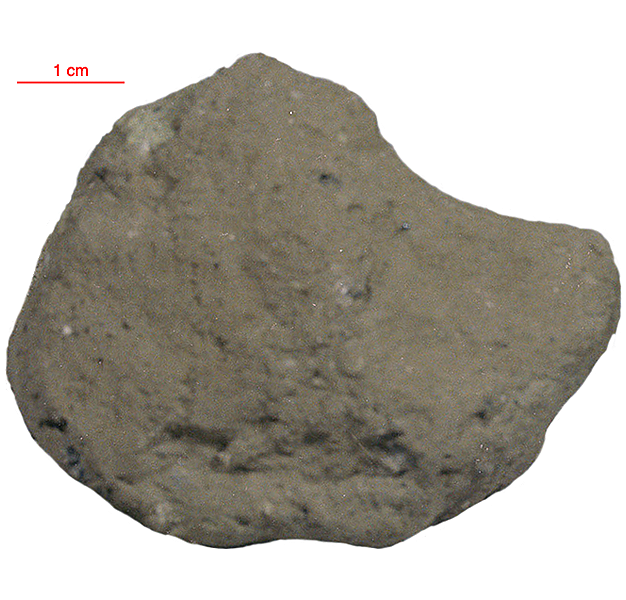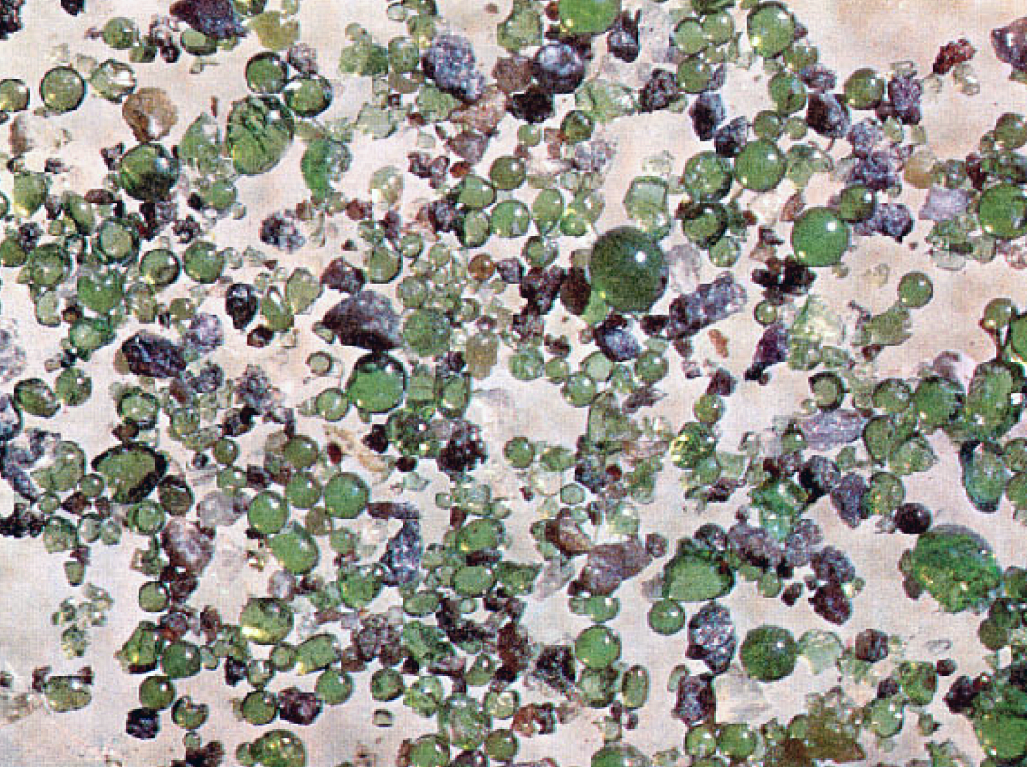
Fact sheet
Two large, greenish, friable clods found at Spur Crater were placed in a documented bag and returned. When the bag was opened, these friable clods were found broken into several pieces with considerable loose “soil” partially derived from the breakup of the clods. The surviving clods were grouped and numbered 15425, 15426 and 15427. The green glass clods are partially light-greenish-grey and partly greyish-brown – it is the greener parts that have been studied. The clods are blocky and very friable, with average particle size less than 0.1 mm. The grey portions appear to be regolith breccia, with admixed basalt fragments. Some beads form composite aggregates, indicating collision while molten in the volcanic plume. Most beads have a distinct texture of micromounds due to a surface coating of condensed volatiles. Fine-featured olivine microlites criss-cross many of the beads - they formed during quenching. Red and yellow-brown volcanic glass is also present.
The combined sample weighed ~500 grams before analysis and is 3.38±0.06 billion years old (Ar/Ar measurement with smallest error quoted).
Further details of this and other Apollo samples are here: http://curator.jsc.nasa.gov/lunar/
The Apollo 15 landing site was in the Apennine Highlands, and close to Hadley Rille — a long, narrow winding valley. Approximately 76 kg of lunar material, including soil, rock, core-tube and deep-core samples, were returned to Earth.
This mission was the first flight of the Lunar Roving Vehicle which allowed the astronauts to venture further from the Lunar Module than in previous missions. During three periods of extravehicular activity, or EVA, on July 31st, and August 1st and 2nd, Scott and Irwin completed a record 18 hours, 37 minutes of exploration, travelling 17.5 miles, in the first car that humans had ever driven on the Moon.
Apollo 15 was launched on 26 July 1971.







